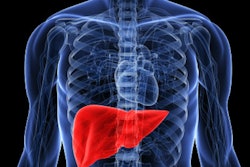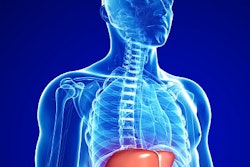
Transient elastography is an effective diagnostic tool for identifying liver fibrosis in children, according to a study from South Korea that was published in the November issue of the American Journal of Roentgenology.
Although transient elastography has been shown to be effective in adults, it has been unclear whether it would also be useful for children, wrote a team led by Dr. Jae-Yeon Hwang of Pusan National University Yangsan Hospital. Children develop chronic liver disease due to hepatitis, fatty liver disease, genetic disorders, or liver dysfunction caused by congestive heart failure. Transient elastography -- which uses both ultrasound and low-frequency elastic waves to evaluate tissue elasticity -- offers a noninvasive diagnostic alternative to liver biopsy.
"Accurate assessment and monitoring of liver fibrosis is important for making therapeutic plans and determining prognosis," Hwang and colleagues wrote. "Currently, the reference standard for assessing the severity of liver fibrosis is liver biopsy."
However, "ultrasound-based elastography has become a promising imaging modality for the measurement of liver stiffness in children because of its ease of access, noninvasiveness, and high accuracy," they noted.
Using Medline and Embase, the researchers identified 11 studies involving 723 patients that assessed the performance of transient elastography for diagnosing the severity of liver fibrosis in children and adolescents. The mean age of patients in these studies ranged from 2.5 months to 13 years (AJR, November 2018, Vol. 211:5, pp. W257-W266).
Hwang's team found that transient elastography had a sensitivity of 95% and a specificity of 90% for this particular application.
"This meta-analysis revealed that the summary sensitivity and specificity of transient elastography for the diagnosis of significant liver fibrosis in children ... were even higher than those of adult studies," the group noted. "This may be because children have thinner abdominal walls, which permits better transmission of shear waves into the liver."
But despite the positive study findings -- and the group's conclusion that transient elastography is an effective way to appraise liver fibrosis in pediatric patients -- it's crucial that radiologists keep a few limitations specific to this population in mind.
"In a real clinical practice, a number of factors may differ between adults and children, such as less patient cooperation, which might result in lower compliance, including motion and breathing status, and the smaller and thinner body size of children compared to adults," Hwang and colleagues noted.




















